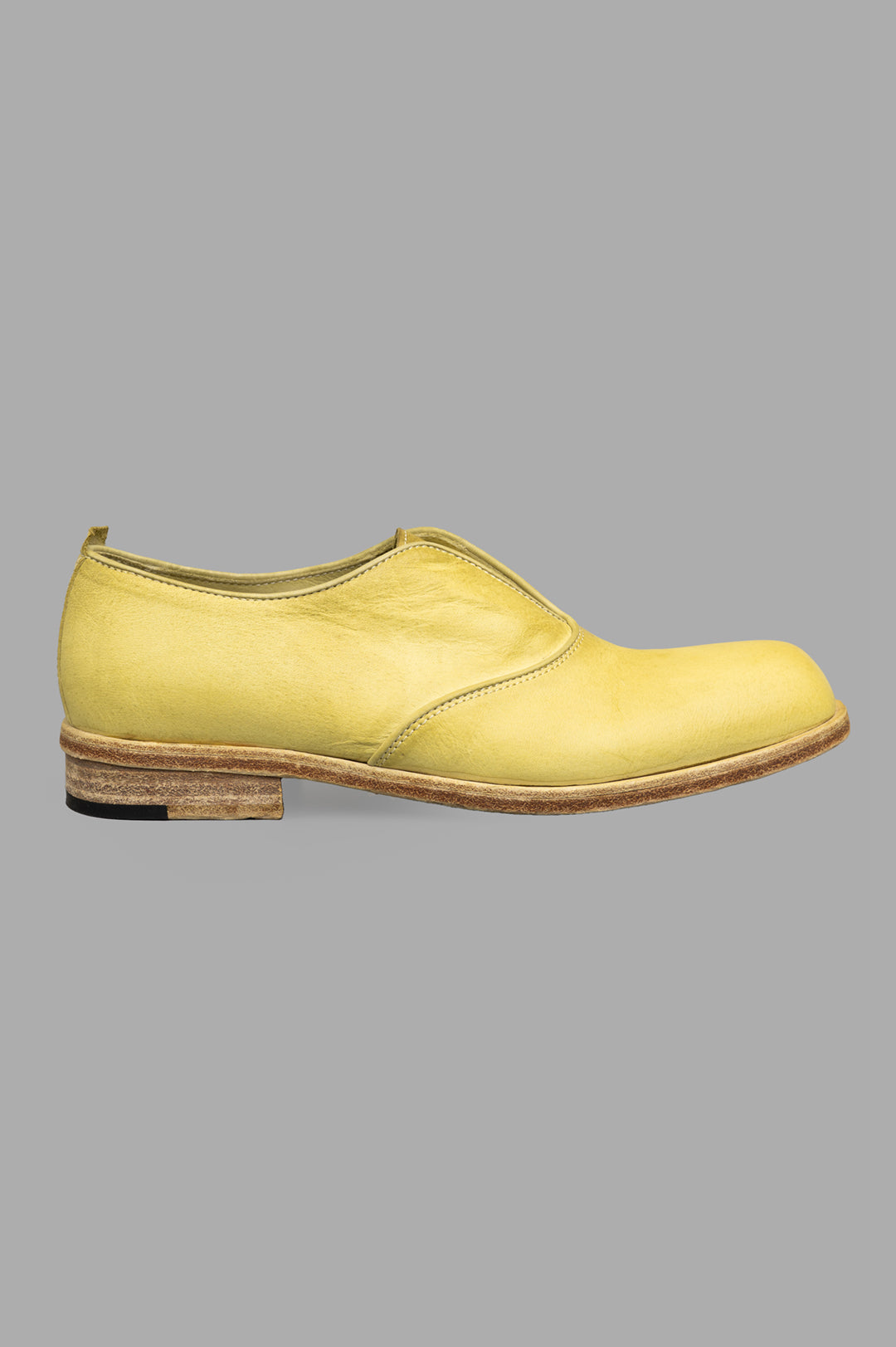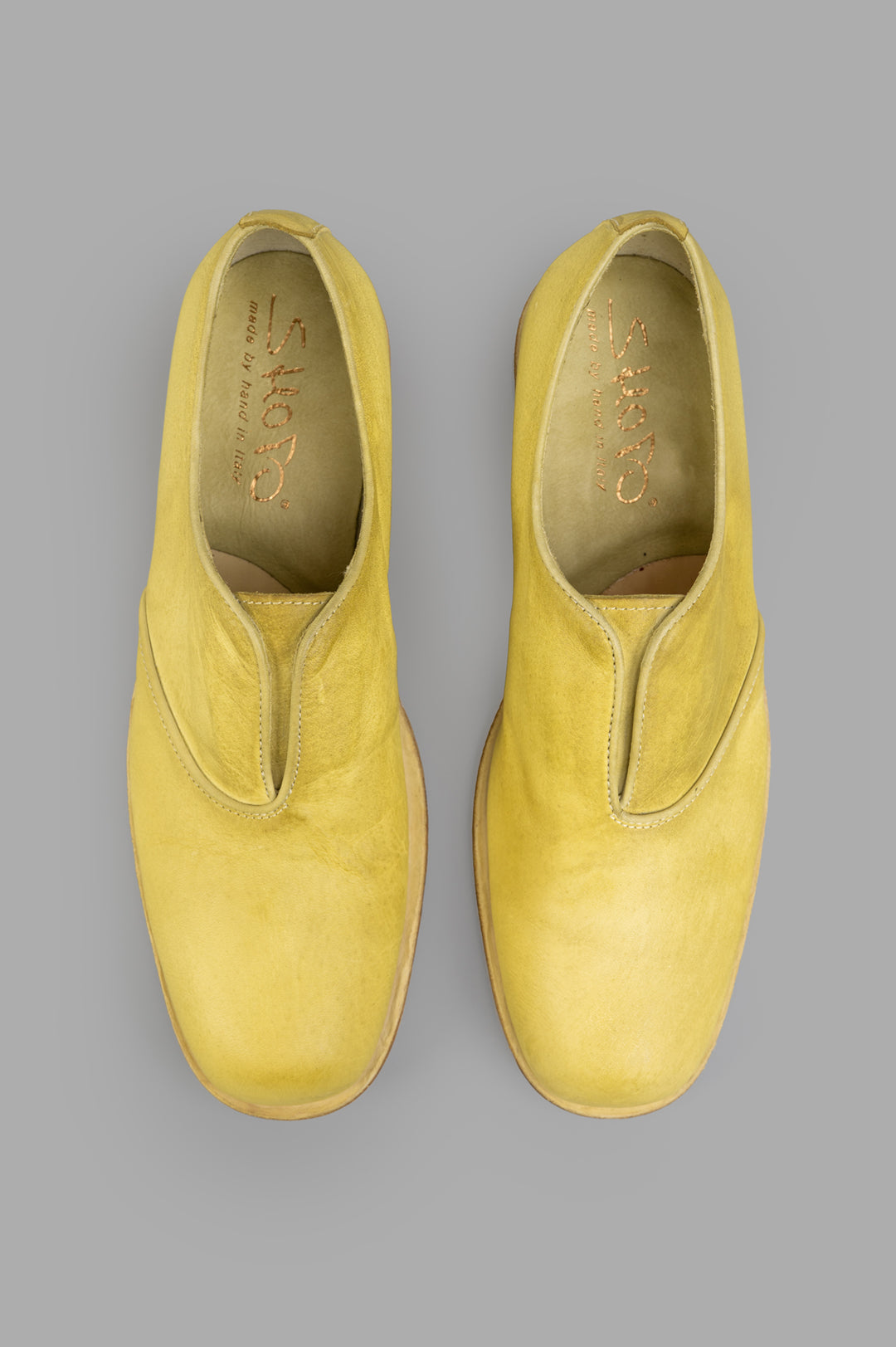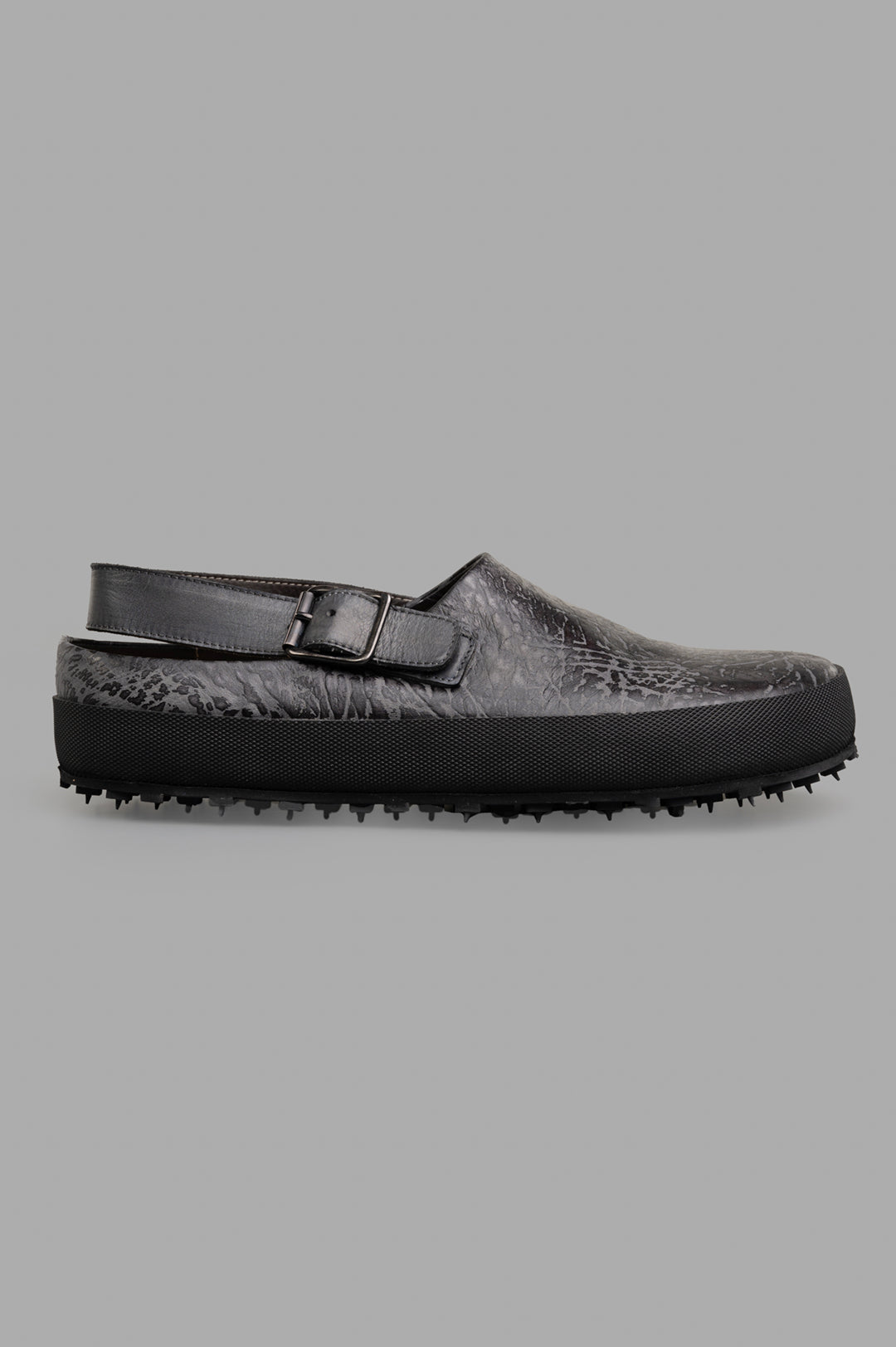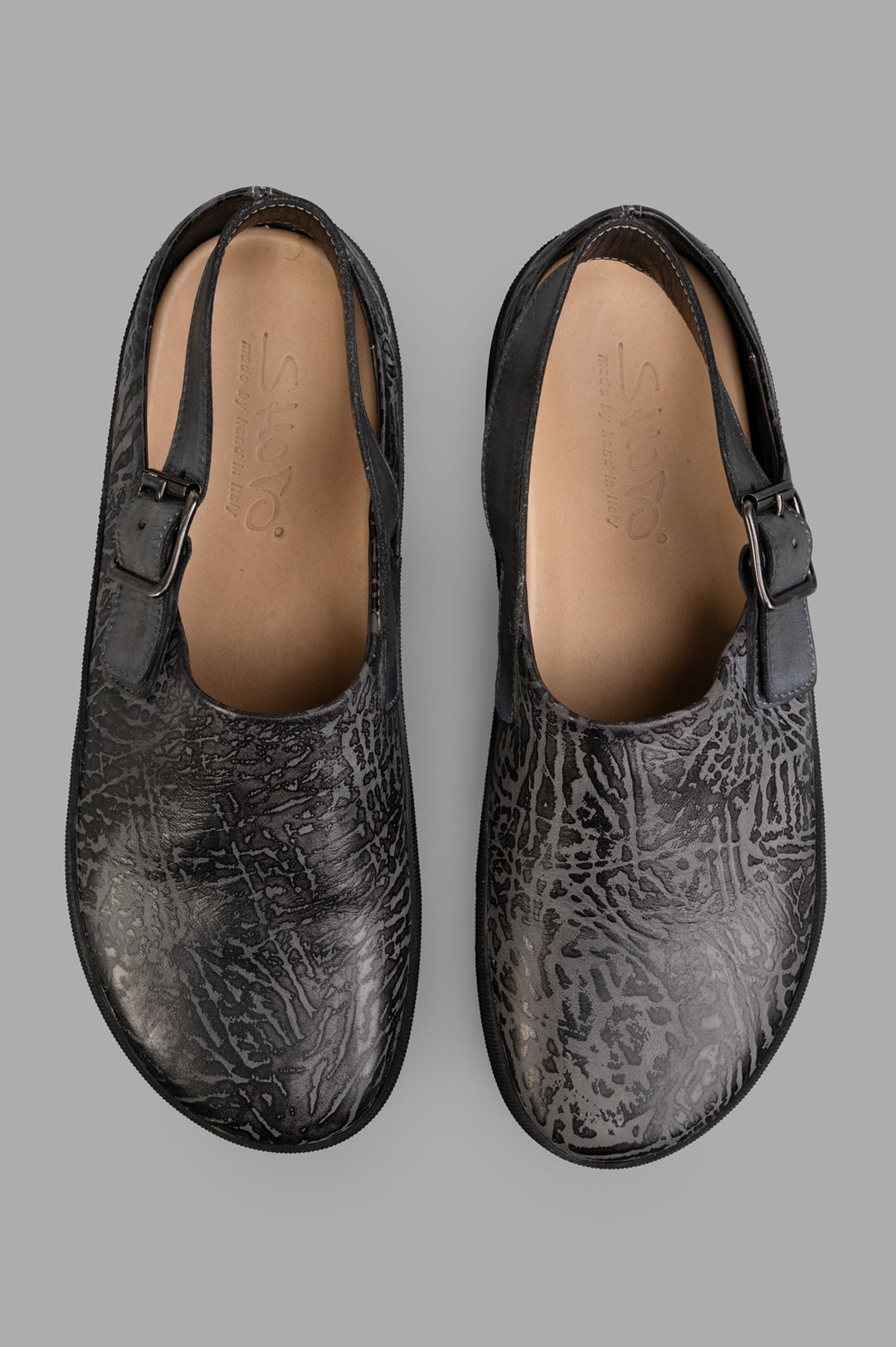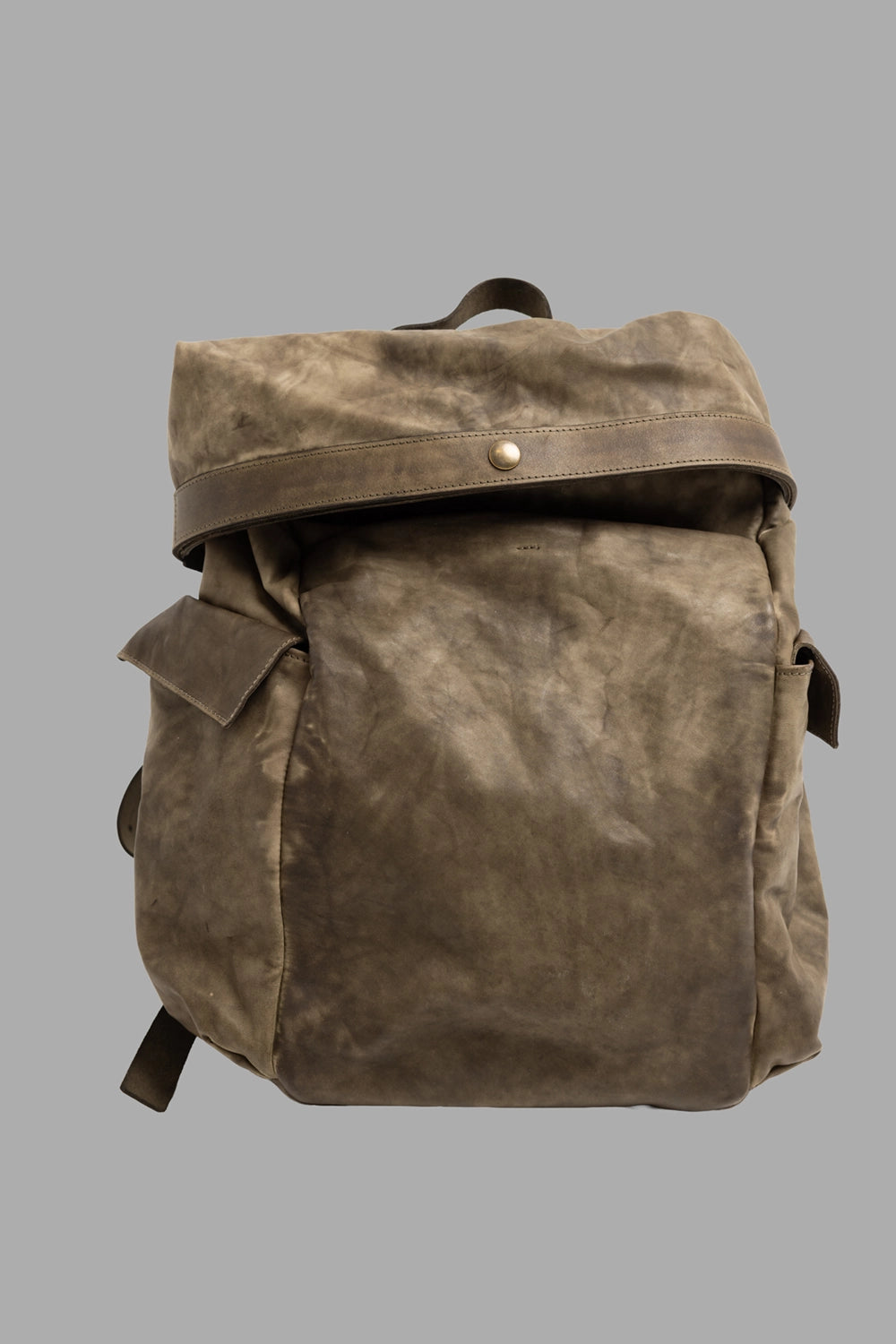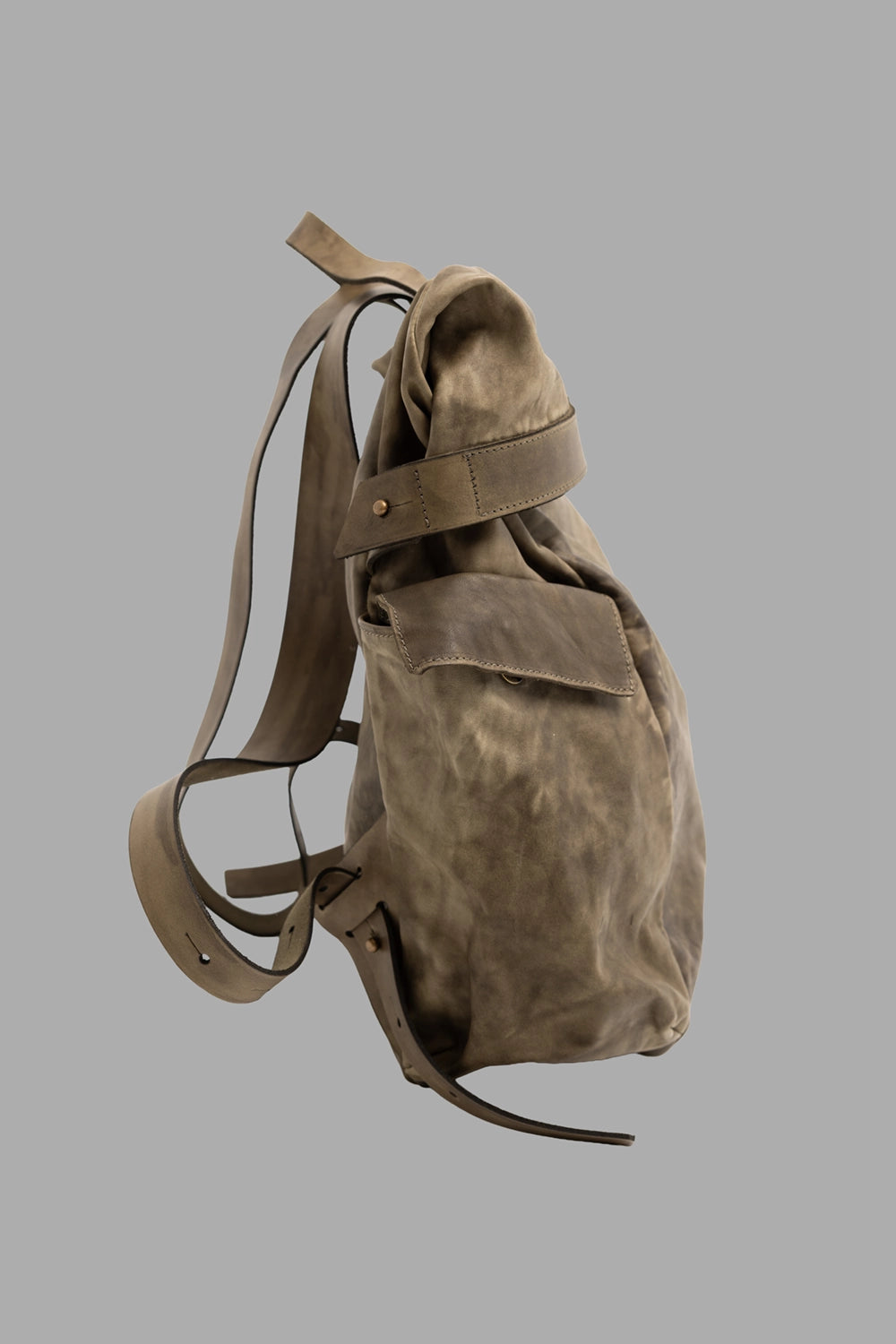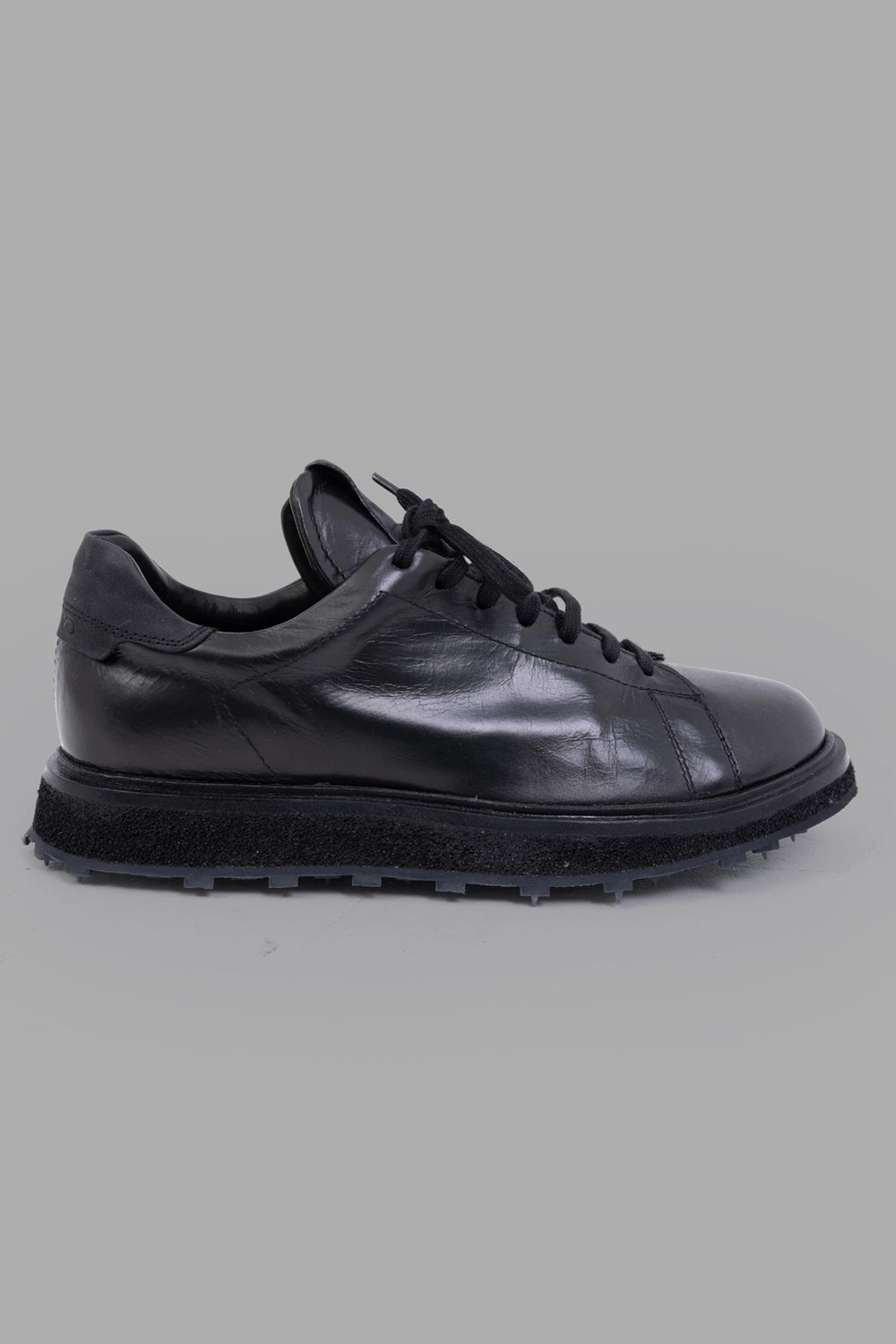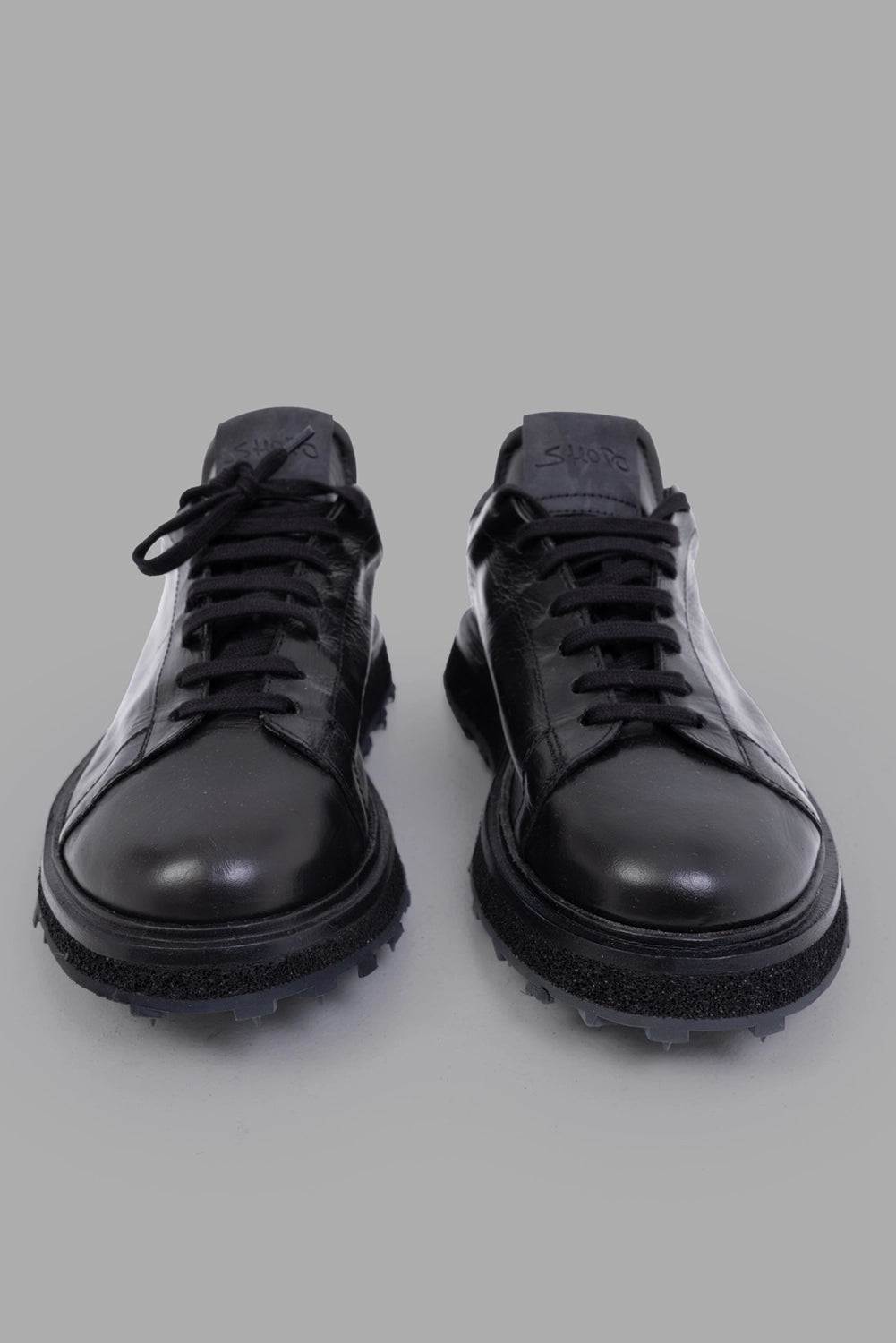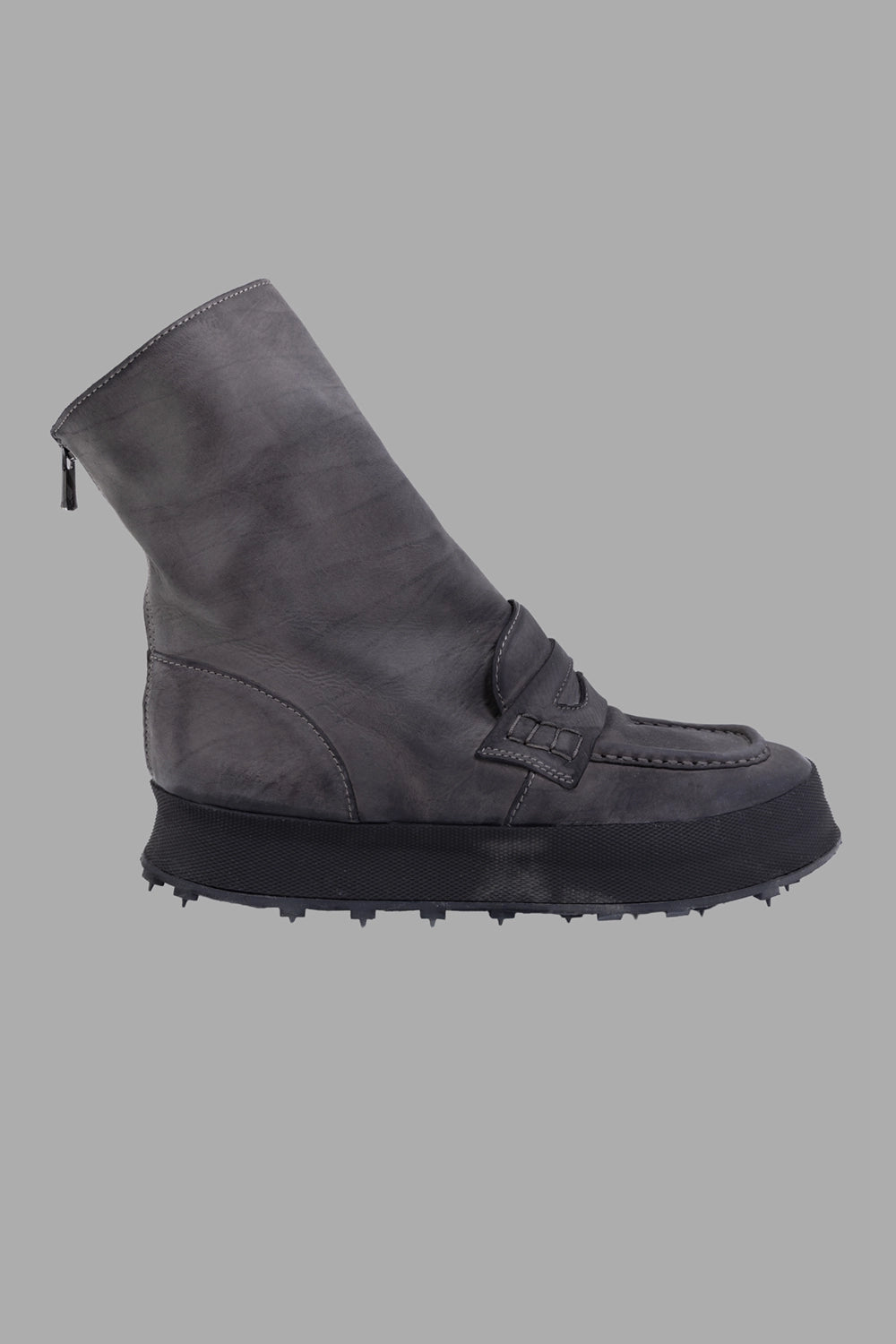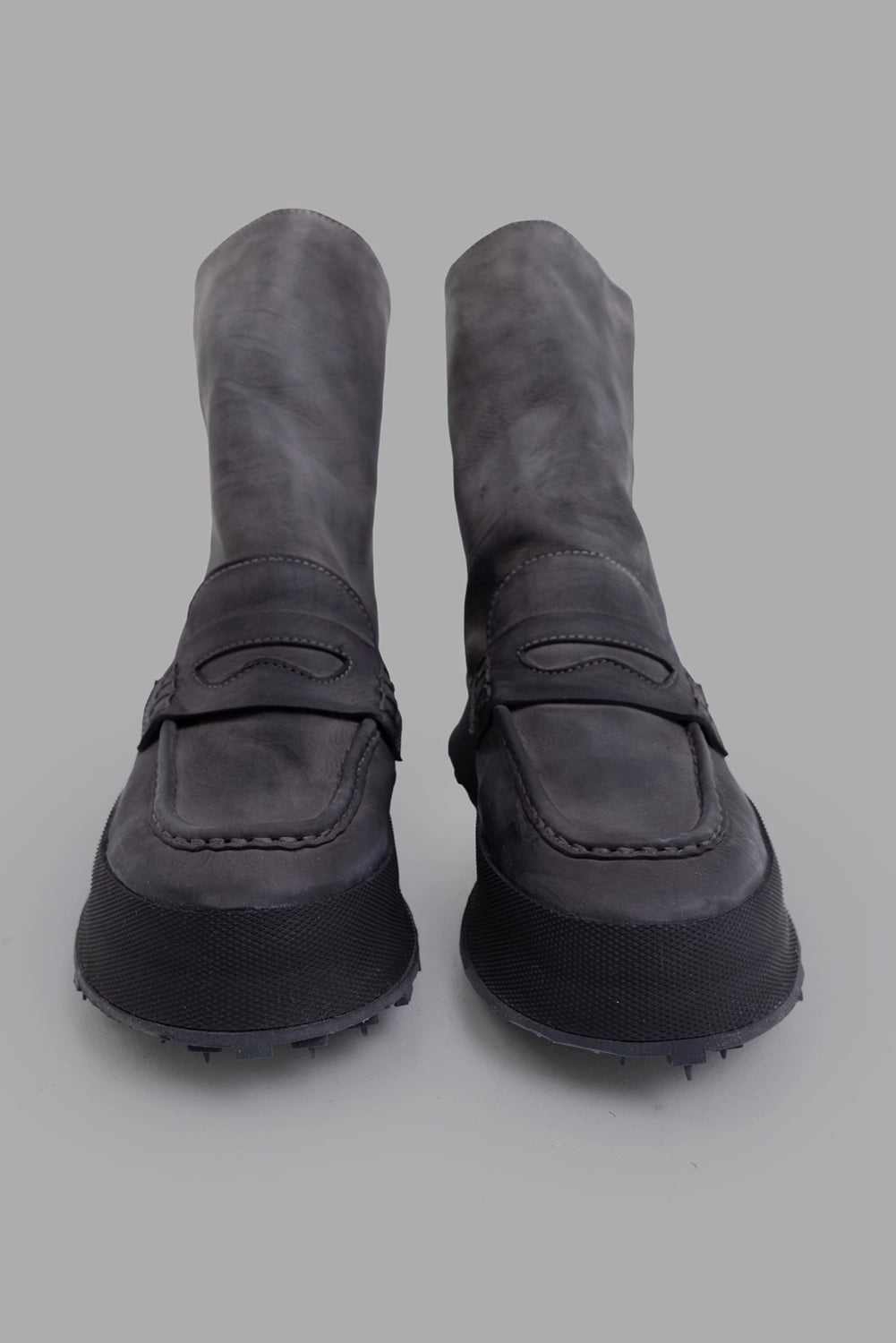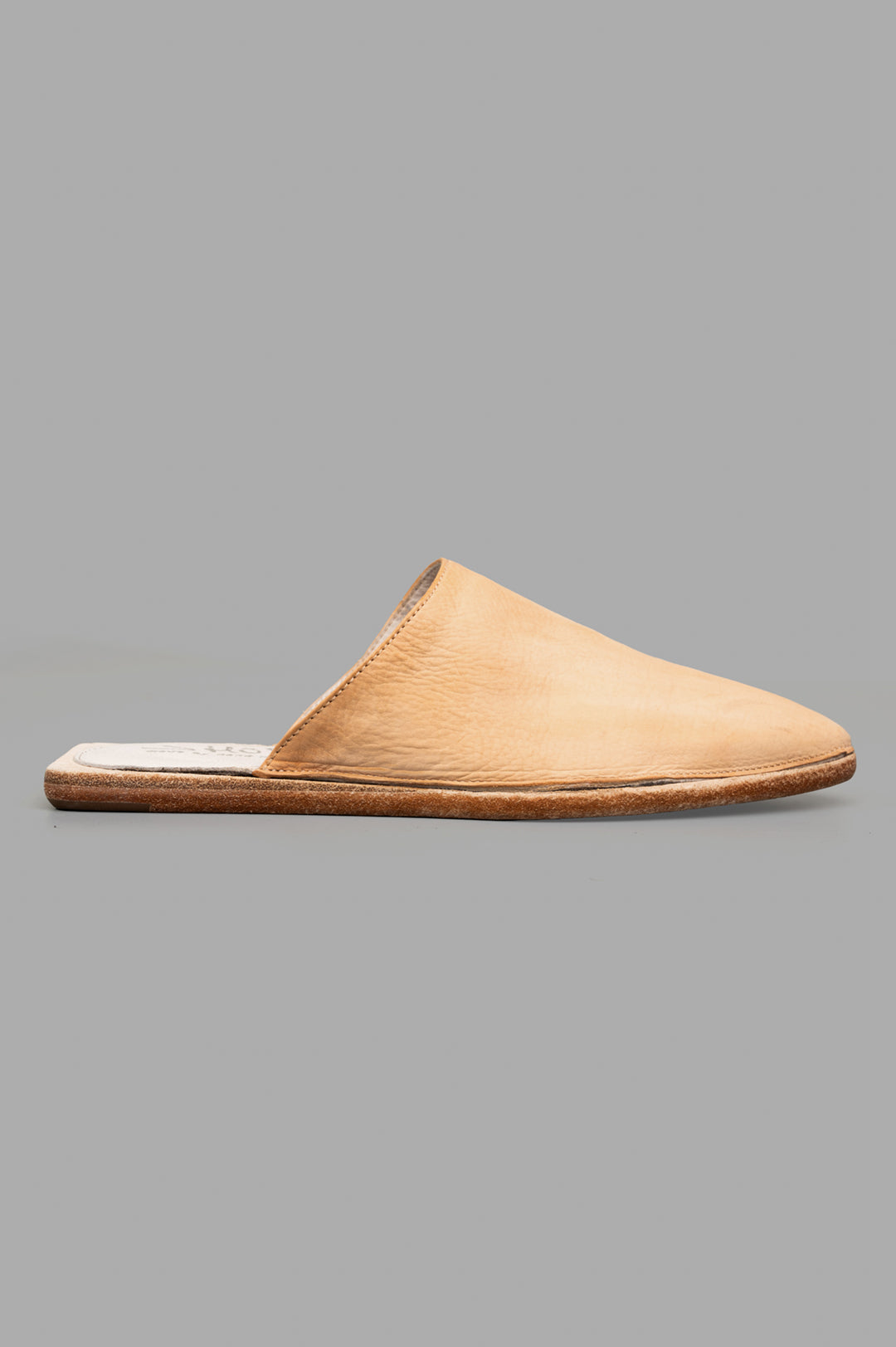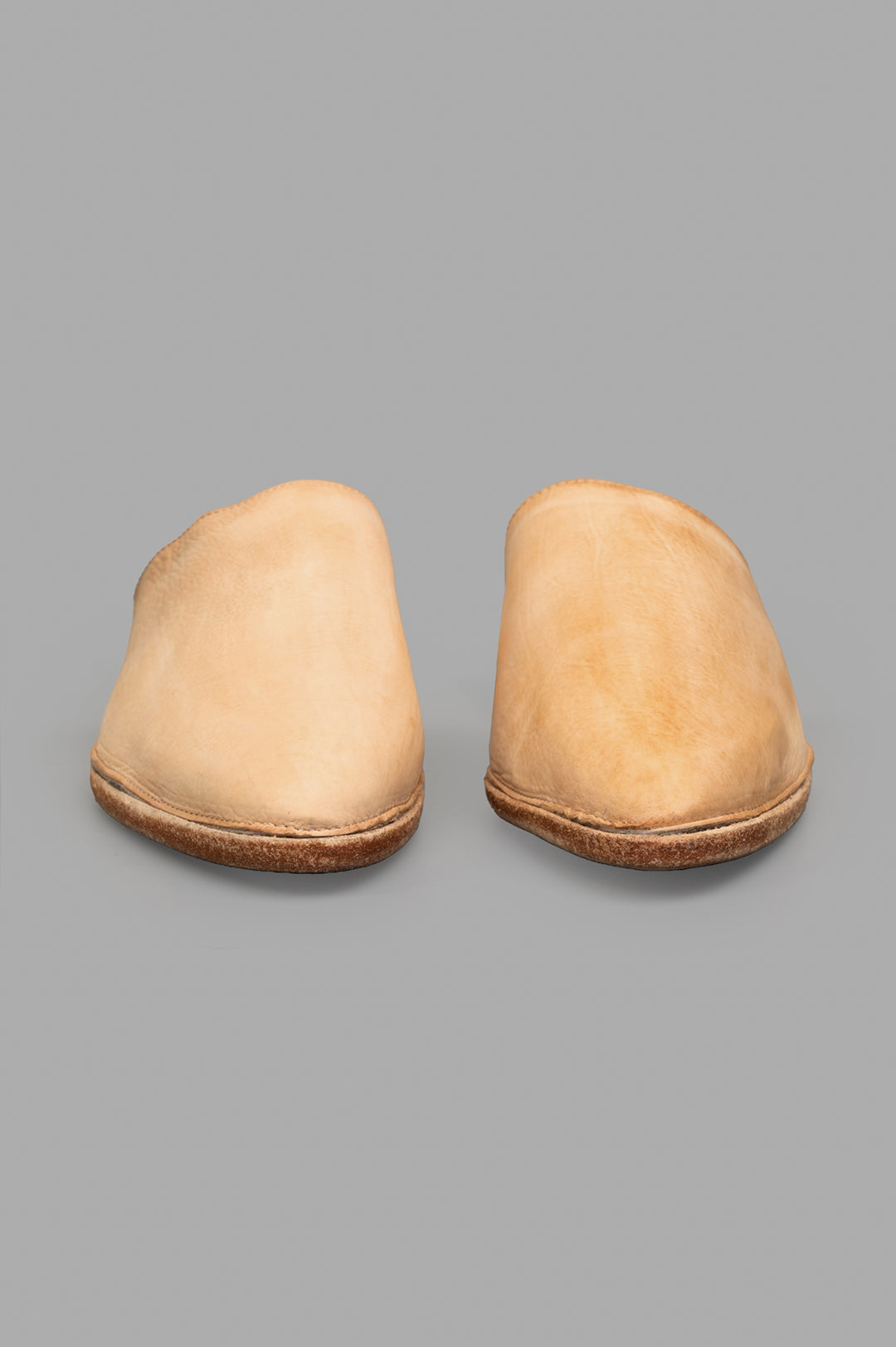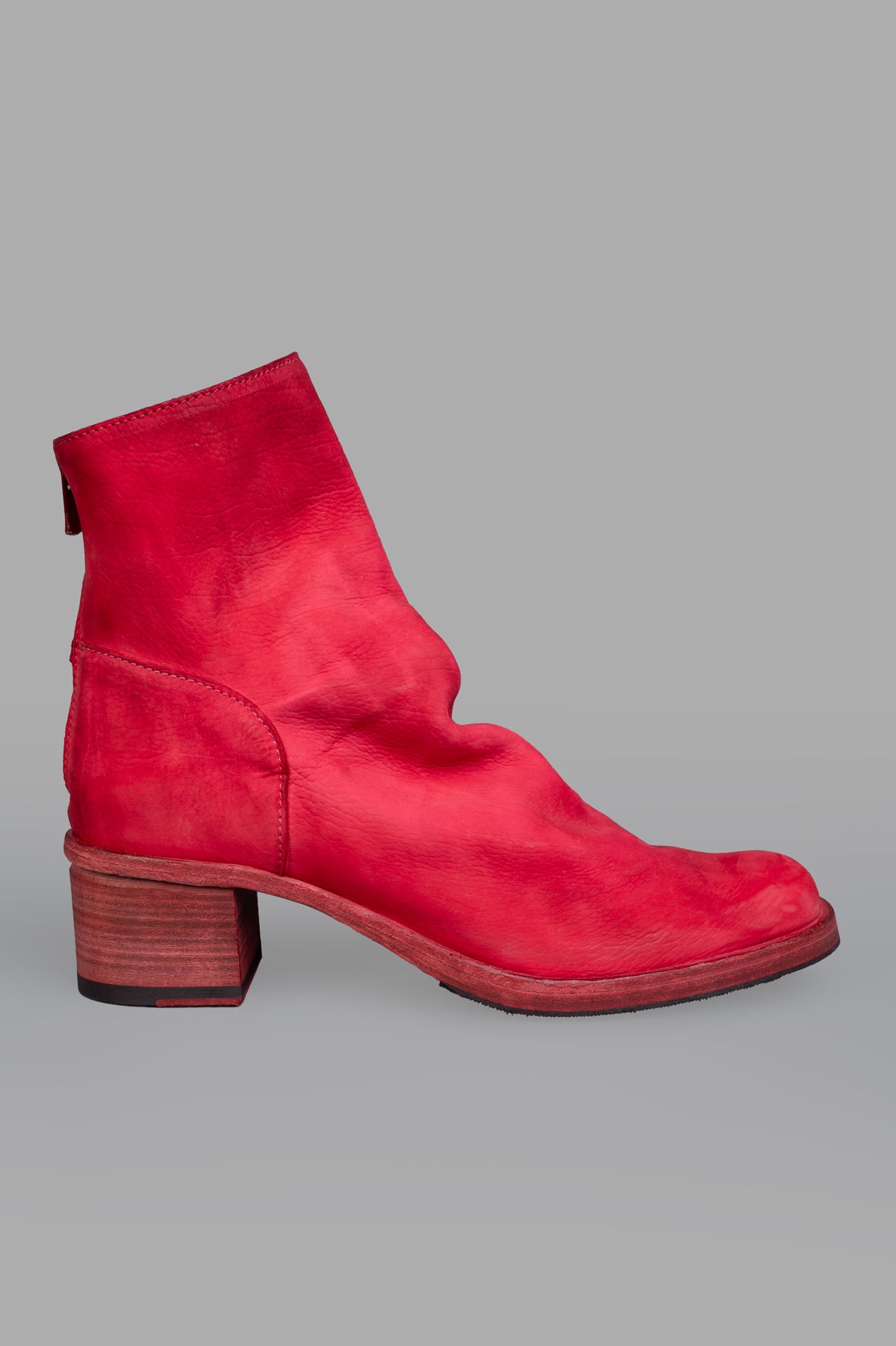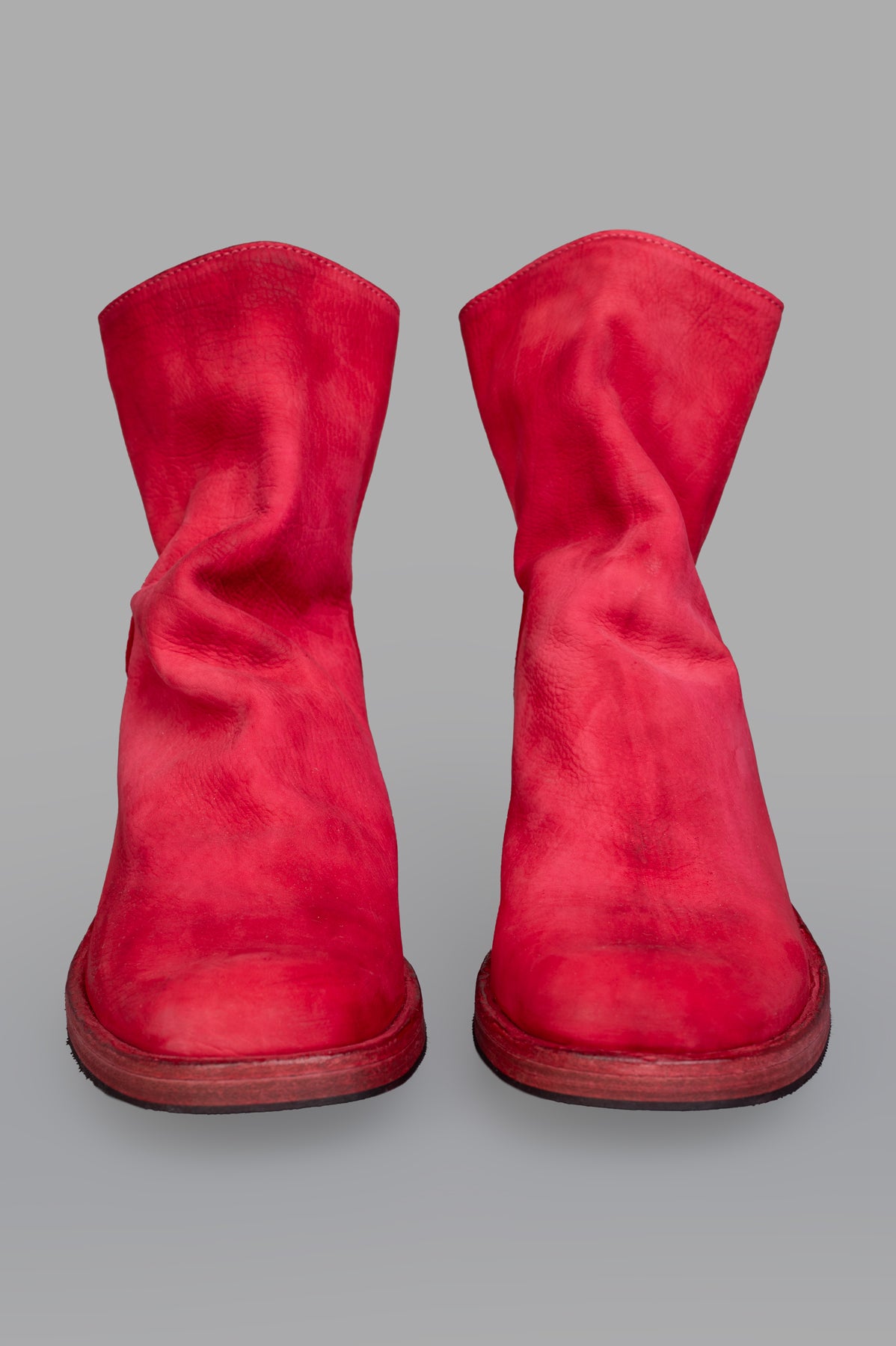Filters
From Montegranaro in Italy’s Marche district, Shoto is a family‑run workshop translating three generations of shoemaking into modern, lived‑in footwear: washed horsehide boots, dip‑dyed sneakers, round‑toed derbies, and pared‑back loafers. Expect close ankles, rounded almond toes, soft yet substantial leathers, and hand finishes that leave each pair slightly different from the next. Founded in the 1960s and led today by brothers Stefano and Simone Medori, the studio keeps production in‑house in Montegranaro, shaping small runs that wear in beautifully with time.
Silhouette & construction
Boots: height without heaviness
Ankle and mid‑calf boots lead. Shafts are cut close for a clean line under trousers; toes skew round to almond for an easy fit that looks sleek, not sharp. Double‑zip and back‑zip patterns balance quick entry with a neat ankle. Chelseas sit snug to the instep with slim elastic gores and a low stacked heel. Platform lugs appear on utilitarian pairs, but weight stays moderate.
Dress and everyday shoes
Derbies and wholecuts follow the same language: rounded toe boxes, modest quarters, and soles that flex from the first wear. Loafers read minimal and softly structured with leather soles or discreet rubber foreparts.
Sneakers, artisan logic
Cup‑sole sneakers carry Shoto’s dye work—dip‑dyed color breaks and subtly washed edges. The uppers stay simple, letting the dye gradient and patina do the talking.
Under the hood
Expect Blake or Blake‑Rapid constructions on many leather‑soled styles for a flexible step and straightforward resoling; selected rubber‑bottomed and cup‑sole pairs use durable cemented builds. Insoles are leather or leather‑topped for breathability; heel counters are reinforced to hold shape without stiffness.
Materials & finish
Horsehide, calf, and beyond
Shoto works across horsehide, calf, buffalo, deer, moose, and occasional kangaroo, chosen for body and grain rather than gloss. Horsehide feels dense with a dry hand and quick surface patina; calf reads smoother and polishes to a soft glow. Linings are predominantly calf for a stable, dry fit.
Vegetable‑tanned leathers
Vegetable tanning appears frequently, prized for tonal depth and the way it darkens along creases and edges. It’s a material that rewards care and wears its miles with pride.
Object‑dye, dip‑dye, wash
Finishes are the brand’s signature. Uppers are often object‑dyed (colored after construction) or dip‑dyed for gradations that sit lighter at the seams. Select models are washed post‑lasting for broken‑in softness. A burnished look is achieved by hand with wax and heat—edges glow while the field stays matte. Each pair is intentionally non‑uniform.
Soles and hardware
Leather soles appear on dress‑leaning pairs, sometimes with a thin rubber half‑sole for urban grip. Vibram and extra‑light rubber lugs serve utility boots and some sneakers. Zips stay tonal and robust; elastic gores are cut tall to hug the ankle without bulk.
Signatures & icons
-
Double‑zip ankle boot: close shaft, rounded toe, inside‑outside zips for clean entry.
-
Back‑zip lace‑up: derby‑style front with a rear zip; looks classic from the top, modern from the heel.
-
Chelsea: snug ankle, slim gore, low stacked heel; often in washed horse or dip‑dyed calf.
-
Dip‑dyed cup‑sole sneaker: two‑tone gradients and slightly washed edges on a firm rubber sole.
-
Washed derby: rounded quarters, leather or Vibram sole, subtle creasing baked in.
(Shoto uses numeric style codes season to season; finishes and lasts persist even as codes change.)
How to wear it now
Weekday precision
Washed horsehide derby under a cropped, pressed trouser and compact blazer. Let the patina carry the detail; keep belts and bags low‑key.
Evening edge
Back‑zip ankle boots with straight dark denim and a clean knit. The burnished toe reads dressy without shine.
Weekend off‑duty
Dip‑dyed sneakers with relaxed chinos and an overshirt. Roll the hem to reveal the gradient line at the sole.
Travel solve
Double‑zip boots with elastic‑waist tailoring. Easy on/off through security, flexible sole for long days on foot.
Fit & sizing notes
-
Overall: EU sizing. Many wearers report a slightly generous length and instep on select boots and sneakers; when between sizes, consider going down a half to one EU size depending on sock weight.
-
Boots: Shafts are close; if you have a high instep, prioritize zip styles or confirm ankle circumference. Blake‑Rapid boots break in fast across the vamp.
-
Derbies/loafers: Rounded toes feel accommodating; choose true size for a secure heel.
-
Sneakers: Cup‑soles often read a touch long; several retailers advise half‑size down.
Care & longevity
-
Smooth leathers (horsehide/calf): Wipe dust, then condition sparingly with neutral cream. Vegetal‑tanned uppers will darken with oils; test products on an inner quarter.
-
Washed and object‑dyed finishes: Expect minor color rub on first wears. Avoid strong cleaners; a neutral cream and soft cloth preserve the hand.
-
Suede/nubuck: Brush to lift nap; apply a silicone‑free protector and reapply after wet weather.
-
Soles: Leather soles benefit from a thin rubber half‑sole if you need grip and wet resistance. Lug platforms clean with mild soap; avoid solvents and high heat.
-
Resole: Blake‑Rapid constructions are resole‑friendly by skilled cobblers; cemented cup‑soles are typically re‑bottomed as a full unit.
Heritage & today
The Shoto story begins in the 1960s, when a leather‑working family in Montegranaro started crafting shoes under its own name. Today, Stefano and Simone Medori marshal that know‑how into small‑batch collections made entirely in‑house in Montegranaro. The workshop’s identity—vegetable‑tanned leathers, washed and dip‑dyed finishes, quietly robust builds—has earned a niche following among retailers who value character over logos. Interviews with the team emphasize a simple philosophy: produce less, make it better, and let the leather speak through use.
Responsibility
Shoto publishes process, not manifestos. Verifiable points: Made in Italy in Montegranaro with in‑house production; frequent use of vegetable‑tanned leathers; long‑life constructions that accept repair on many styles (notably Blake‑Rapid). No broad certification dashboard is claimed. Judge by composition notes, resolability, and how often you’ll reach for the pair.

